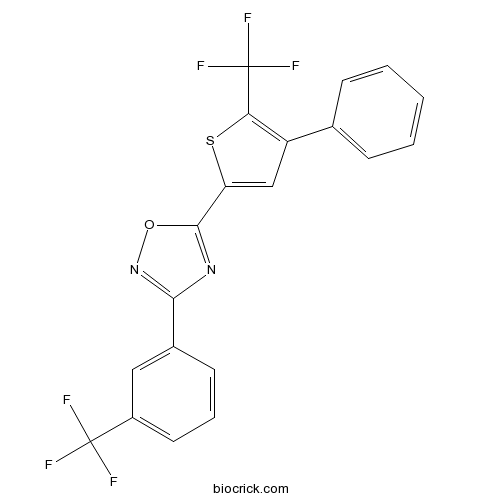GPCR/G protein
G protein–coupled receptors (GPCRs) which are also known as seven-transmembrane domain receptors, 7TM receptors, heptahelical receptors, serpentine receptor, and G protein–linked receptors (GPLR), constitute a large protein family of receptors, that detect molecules outside the cell and activate internal signal transduction pathways and, ultimately, cellular responses. Coupling with G proteins, they are called seven-transmembrane receptors because they pass through the cell membrane seven times.
Products for GPCR/G protein
- GIP Receptor(2)
- FFAR1 (GPR40)(7)
- 5-HT Receptor(238)
- Urotensin-II Receptor(10)
- CCK2 Receptors(7)
- P2Y Receptor(25)
- EP4 Receptor(3)
- CRF1 Receptors(6)
- Melatonin Receptors(9)
- LPL Receptor(1)
- Adenosine Receptor(54)
- VIP Receptors(7)
- OX Receptor(15)
- Chemokine Receptors(16)
- Neurotensin Receptors(7)
- Prostanoid Receptors(21)
- CCK1 Receptors(5)
- Adrenergic Receptor(136)
- GPR119(5)
- Calcium-Sensing Receptor(3)
- Cannabinoid Receptor(36)
- Angiotensin Receptor(21)
- GPR120(2)
- Protease-Activated Receptors(9)
- PAF Receptors(3)
- Sigma Receptor(24)
- NK3 Receptor(6)
- NPY Receptors(23)
- Glucagon Receptor(16)
- Leukotriene Receptor(9)
- Bombesin Receptors(14)
- Sphingosine(14)
- CXCR(16)
- NOP Receptor(21)
- GPR55(5)
- Galanin Receptors(11)
- Endothelin Receptor(11)
- GPR35(7)
- Glucocorticoid Receptor(17)
- Calcitonin and Related Receptors(10)
- Bradykinin Receptors(12)
- mGluR(11)
- Adenosine Kinase(2)
- GPR109A(2)
- GPCR19(1)
- Non-selective CRF(7)
- LTD4 Receptor(1)
- Secretin Receptors(1)
- Melanocortin (MC) Receptors(16)
- ETB Receptors(5)
- NK2 Receptors(7)
- LPA Receptor(5)
- S1P receptor inhibitor(5)
- CCR2(5)
- Hydroxycarboxylic Acid Receptors(5)
- PACAP Receptors(3)
- Melanin-concentrating Hormone Receptors(7)
- Vasopressin Receptor(10)
- Somatostatin Receptor(15)
- TSH Receptor(1)
- Peptide Receptors(8)
- Ghrelin Receptors(9)
- ETA Receptors(3)
- Orphan 7-TM Receptors(6)
- Oxytocin Receptors(4)
- Ras(6)
- Heterotrimeric(1)
- CysLT1 receptor(1)
- Motilin Receptor(4)
- Acetylcholine(3)
- Prostaglandin Receptor(4)
- GHSR(4)
- EBI2/GPR183(1)
- Gonadotropin-Releasing Hormone Receptors(3)
- Orexin(3)
- Apelin Receptor(5)
- CRF2 Receptors(3)
- Calcimimetic Agent(2)
- Adrenergic Transporters(5)
- CaSR(3)
- EP1 Receptor(1)
- Sensory Neuron-Specific Receptors(1)
- 17,20-lyase(3)
- Adenosine Deaminase(3)
- NK Receptor(1)
- PGD2 Receptor(1)
- GLUT1(1)
- RGS(2)
- GPR44(1)
- Adiponectin Receptor(1)
- ERRγ(1)
- Cat.No. Product Name Information
-
BCC5662
IPAG
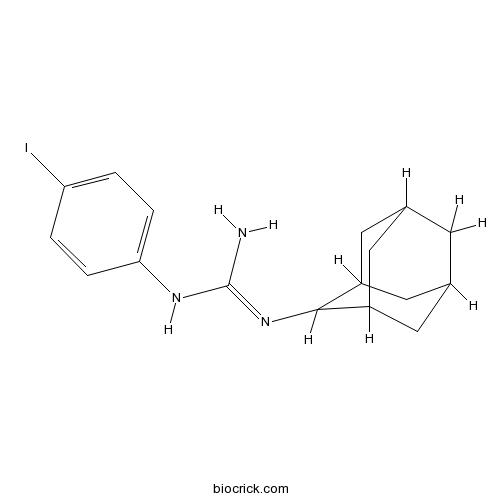
-
BCC6987
SB 216641 hydrochloride
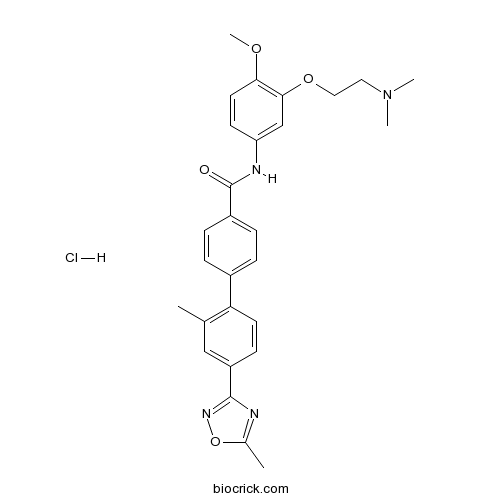
-
BCC6010
Cortistatin 14
Cortistatin 14, human, rat (CST-14, human, rat), a neuropeptide with neuronal depressant and sleep modulating properties, can bind to all five cloned somatostatin receptors (SSTRs) and ghrelin receptor to exert its biological activities and co-exists with GABA within the cortex and hippocampus.
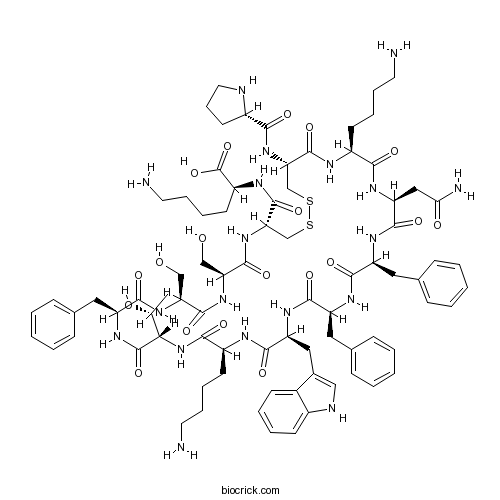
-
BCC6968
SC 19220
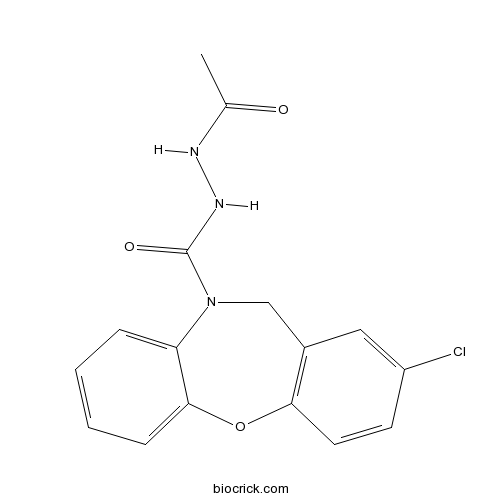
-
BCC5892
GLP-2 (rat)

-
BCC1380
Atrasentan hydrochloride
Atrasentan hydrochloride (ABT-627 hydrochloride) is a selective endothelin A receptor antagonist with an IC50 of 0.0551 nM for ETA.
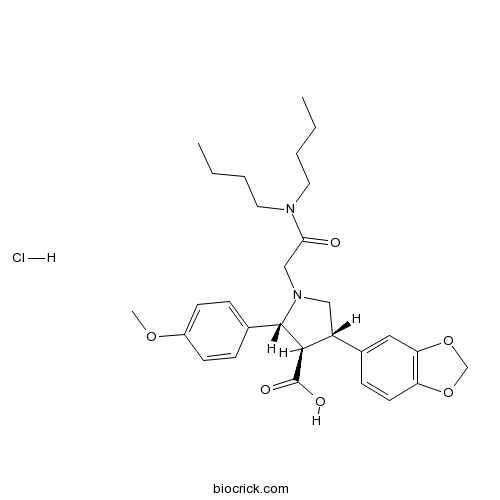
-
BCC8020
Prosaptide TX14(A)
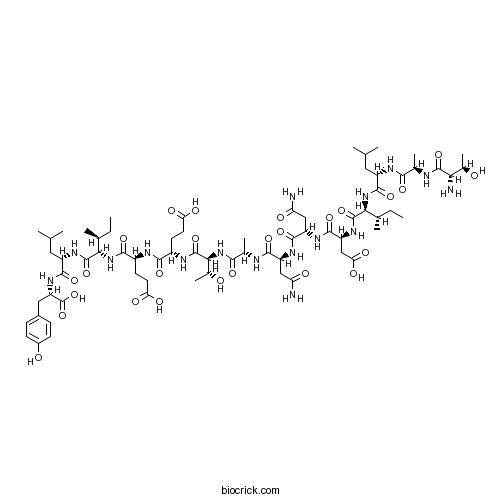
-
BCC1107
4-Acetyl Ramelteon
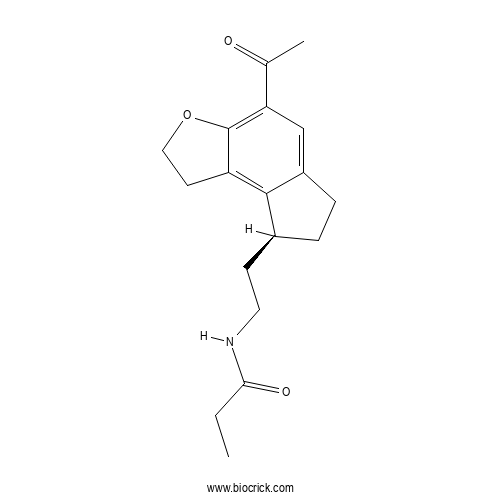
-
BCC7040
SB 221284
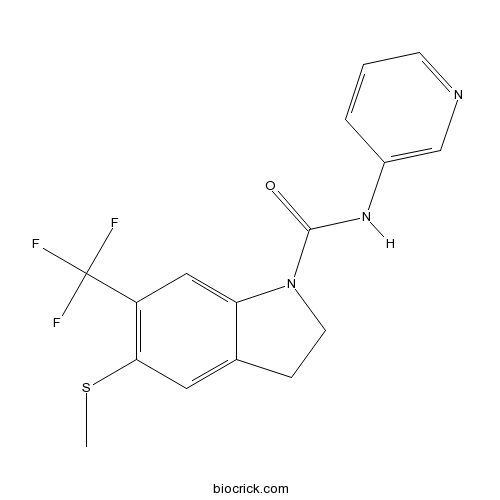
-
BCC6706
Methiothepin maleate
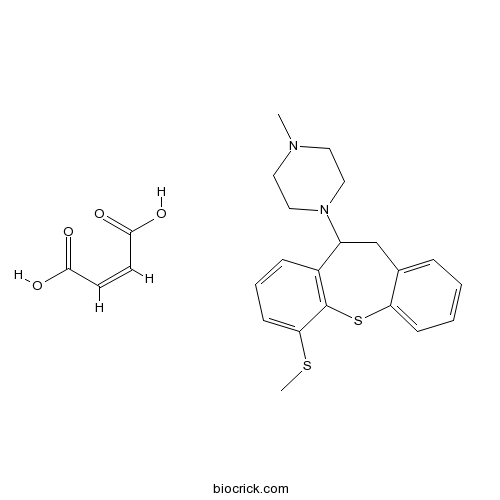
-
BCC7633
SN 003
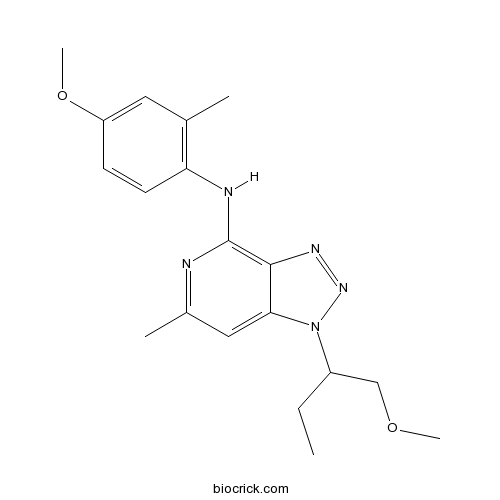
-
BCC7395
T 98475
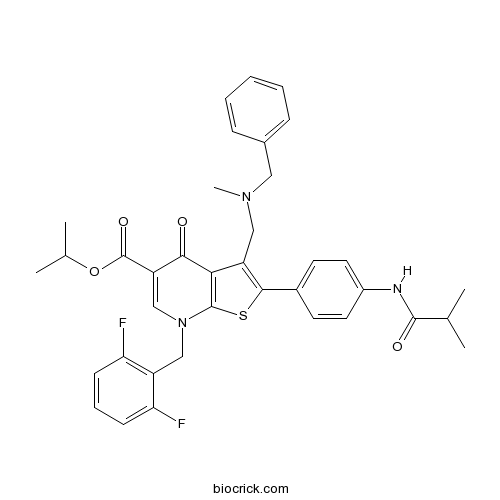
-
BCC7361
NNC 26-9100
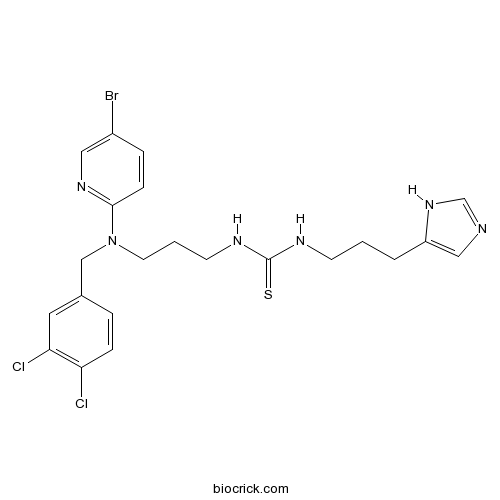
-
BCC7559
LY 334370 hydrochloride
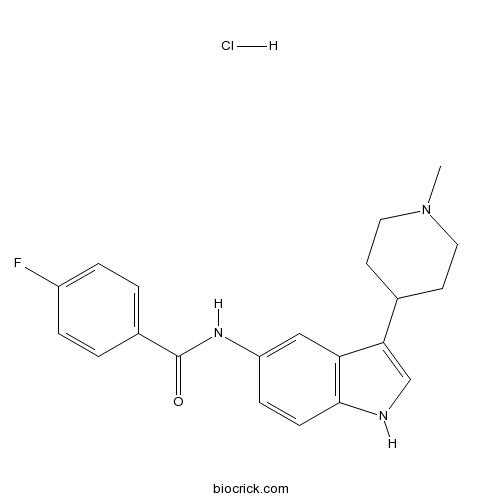
-
BCC6035
SB 243213 dihydrochloride
SB 243213 hydrochloride is an orally active, selective and high-affinity 5-hydroxytryptamine (5-HT)2C receptor antagonist with a pKi of 9.37 and a pKb of 9.8 for human 5-HT2C receptor. SB 243213 hydrochloride has improved anxiolytic profile and has the potential for schizophrenia and motor disorders.
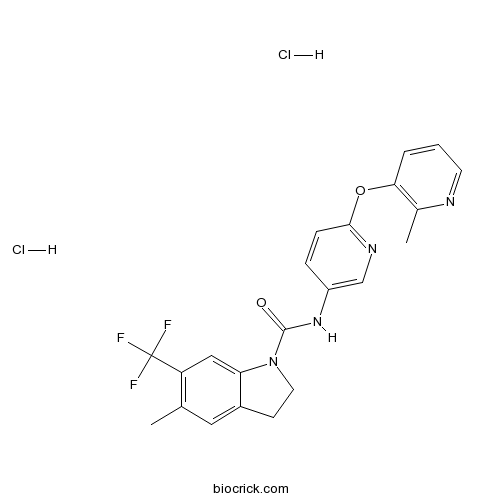
-
BCC5755
Ac-RYYRWK-NH2
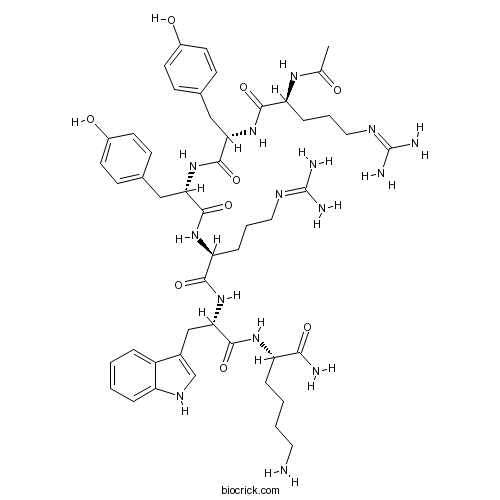
-
BCC5736
Ac-RYYRIK-NH2
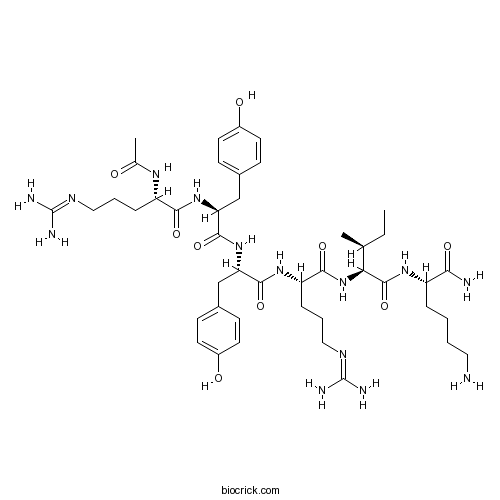
-
BCC6723
4-PPBP maleate
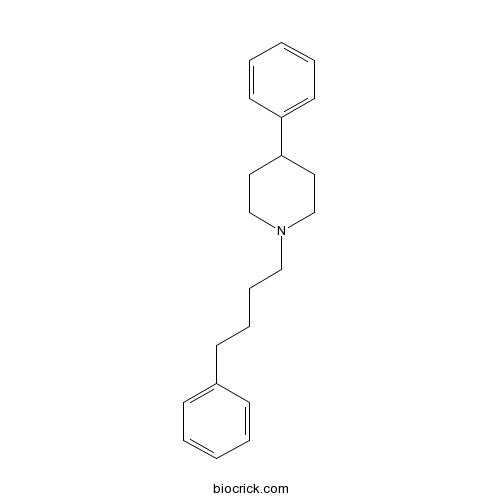
-
BCC6743
3-AQC
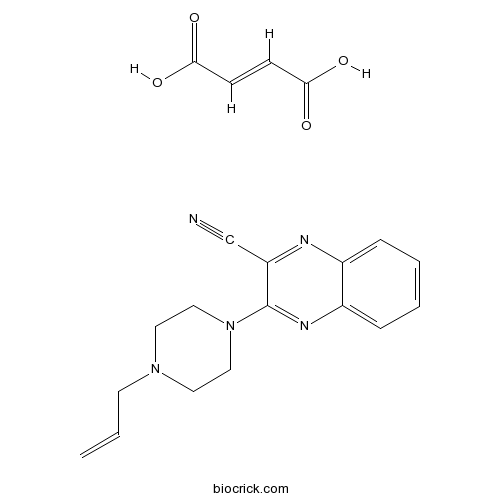
-
BCC1724
LY341495
LY341495 is a metabotropic glutamate receptor (mGluR) antagonist with IC50s of 2.9 nM, 10 nM, 170 nM for mGluR-2, mGluR-3, mGluR-8, respectively.
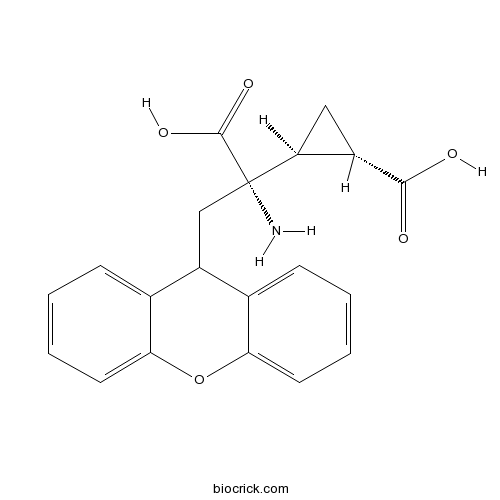
-
BCC6882
Spiperone hydrochloride
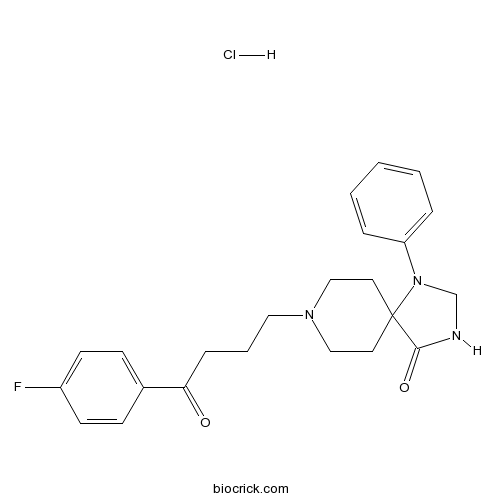
-
BCC6944
AM 281
Potent, selective CB1 antagonist/inverse agonist
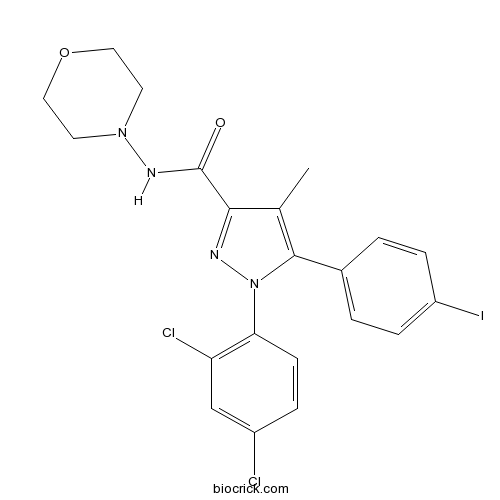
-
BCC7512
Ro 04-6790
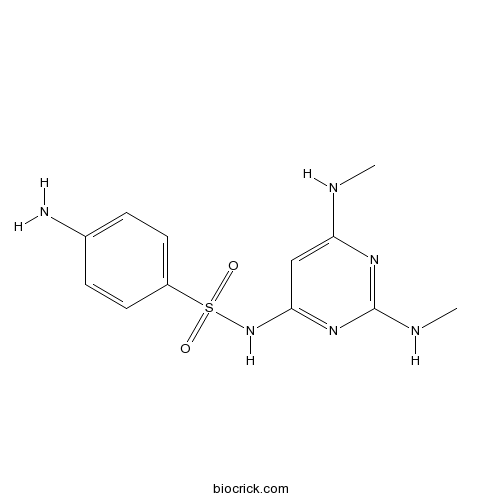
-
BCC5766
Orexin B (mouse)
Orexin B, rat, mouse is an endogenous agonist at Orexin receptor with Kis of 420 and 36 nM for OX1 and OX2, respectively.

-
BCC1595
glucagon receptor antagonists 3
Glucagon receptor antagonists-3 is a highly potent glucagon receptor antagonist.
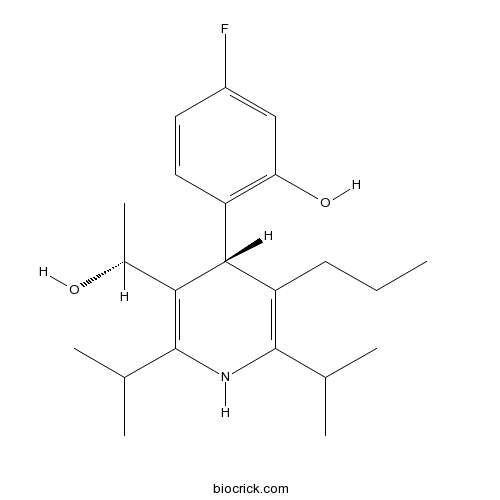
-
BCC1594
glucagon receptor antagonists 2
Glucagon receptor antagonists-2 is a highly potent glucagon receptor antagonist.
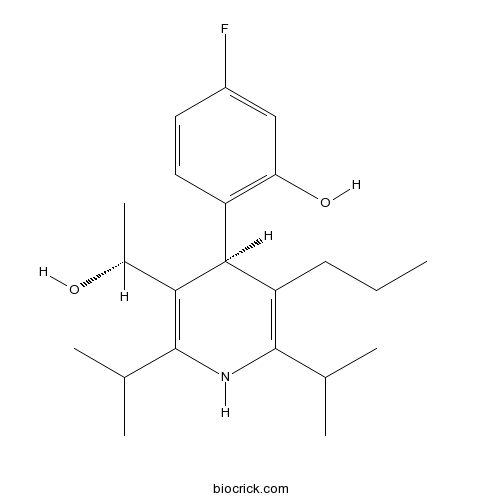
-
BCC7785
NF 340
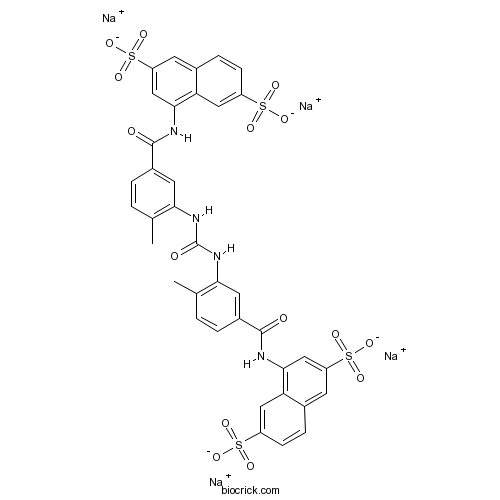
-
BCC7426
PD 176252
PD176252 is a potent antagonist of neuromedin-B preferring (BB1) and gastrin-releasing peptide-preferring (BB2) receptor with Kis of 0.17 nM and 1 nM for human BB1 and BB2 receptors, and 0.66 nM, 16 nM for Rat BB1 and BB2 receptors, respectively; PD176252 is also an agonist of N-Formyl peptide receptor1/2 (FPR1/FPR2), with EC50s of 0.31 and 0.66 μM in HL-60 cells.
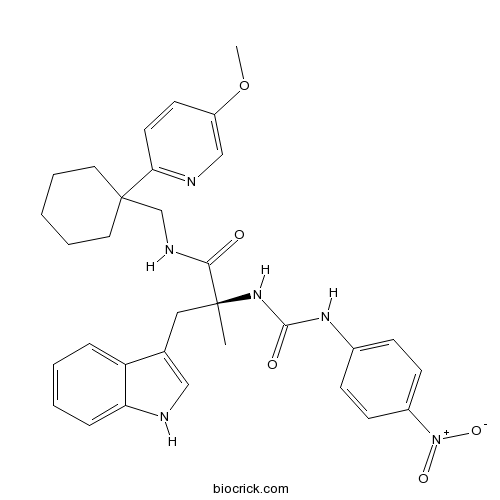
-
BCC1982
Talnetant hydrochloride
Talnetant Hcl(SB 223412 Hcl) is a potent and selective NK3 receptor antagonist(ki=1.4 nM, hNK-3-CHO); 100-fold selective for the hNK-3 versus hNK-2 receptor, with no affinity for the hNK-1 at concentrations up to 100 uM.
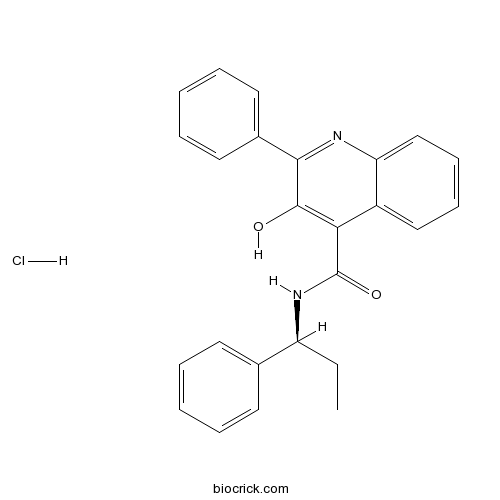
-
BCC7311
2'-MeCCPA
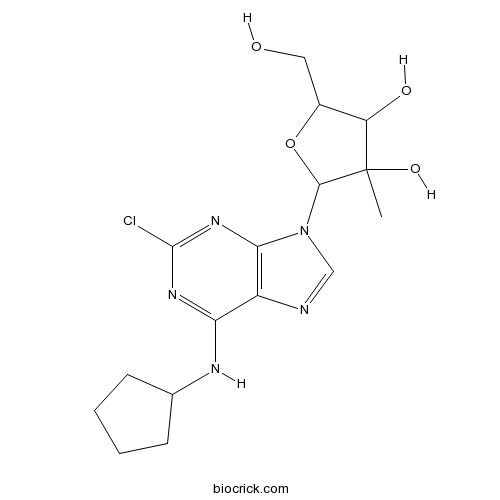
-
BCC5764
Orexin A (human, rat, mouse)
Orexin A human, rat, mouse, a 33 amino acid excitatory neuropeptide, orchestrates diverse central and peripheral processes. Orexin A human, rat, mouse is a specific, high-affinity agonist for G-protein-coupled receptor OX1R. Orexin A human, rat, mouse has a role in the regulation of feeding behavior. Orexin A human, rat, mouse is an effective anti-nociceptive and anti-hyperalgesic agent in mice and rats.
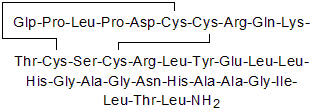
-
BCC5765
Orexin B (human)
Orexin B, human is an endogenous agonist at Orexin receptor with Kis of 420 and 36 nM for OX1 and OX2, respectively.

-
BCC6832
BD 1063 dihydrochloride
BD1063 dhydrochloride is a potent and selective sigma 1 receptor antagonist.
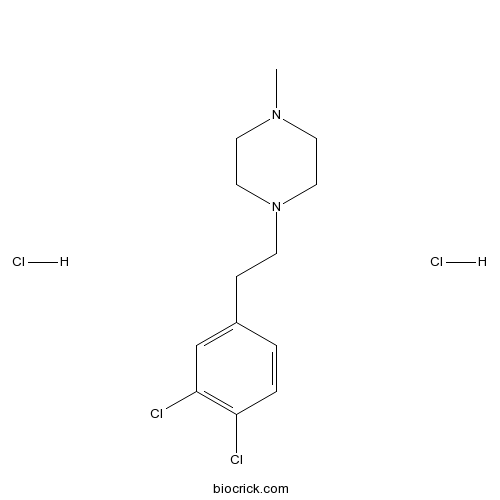
-
BCC6684
MR 16728 hydrochloride
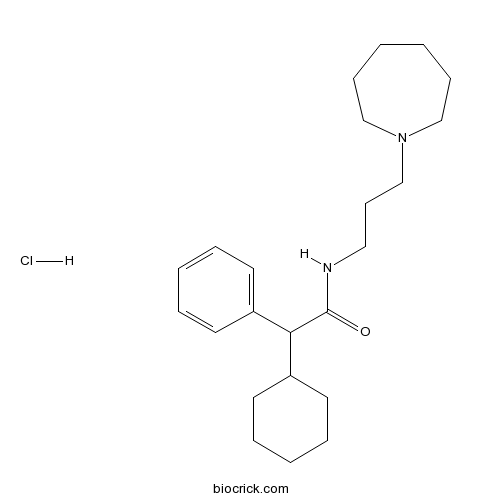
-
BCC5657
L-693,403 maleate
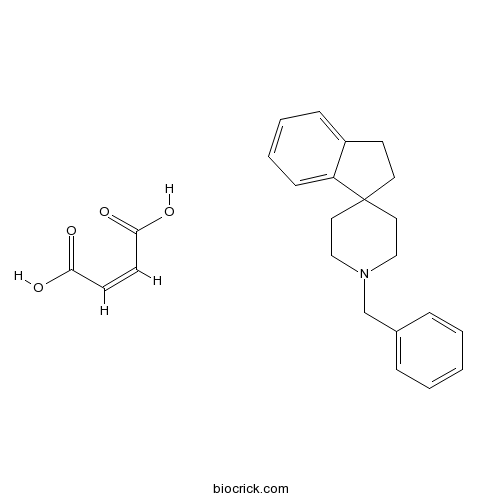
-
BCC5673
SB 203186 hydrochloride
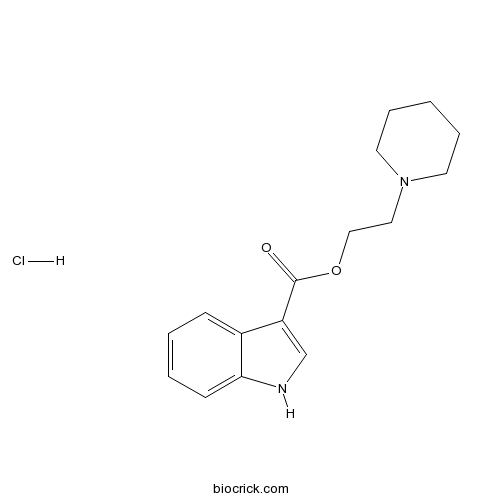
-
BCC5819
HS 014
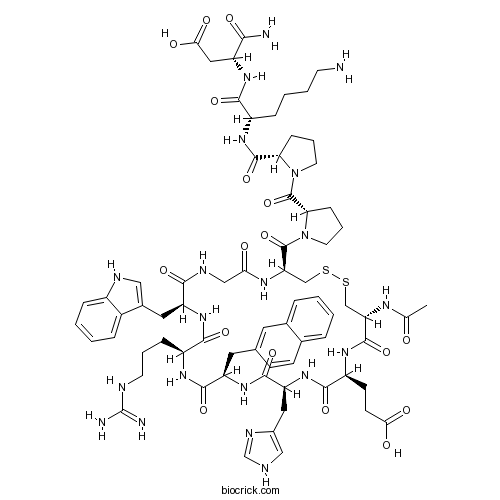
-
BCC5703
Nocistatin (bovine)
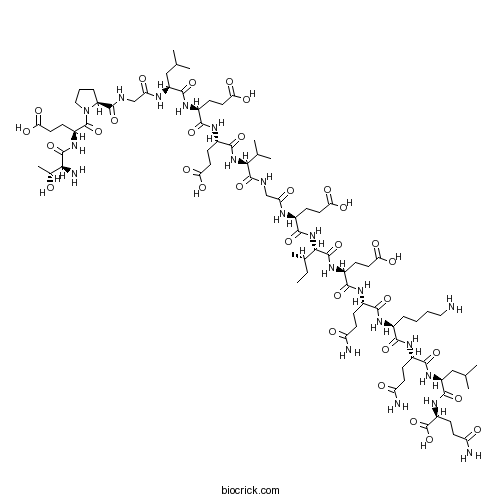
-
BCC7364
(1R,1'S,3'R/1R,1'R,3'S)-L-054,264
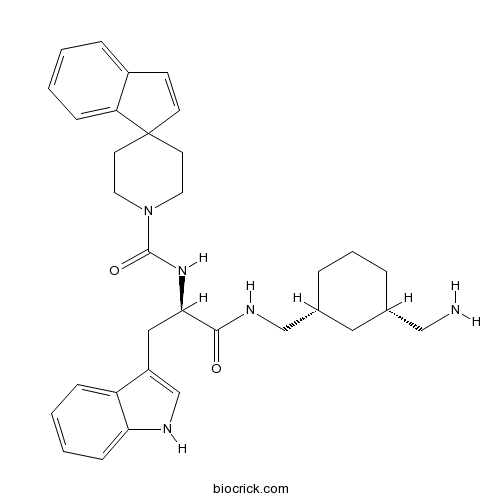
-
BCC1674
JWH 073
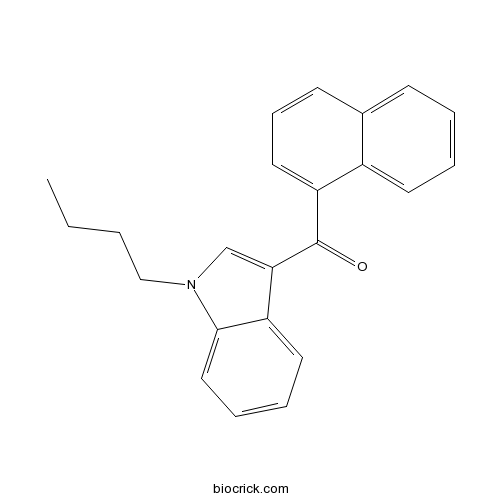
-
BCC6006
CART (55-102) (rat)
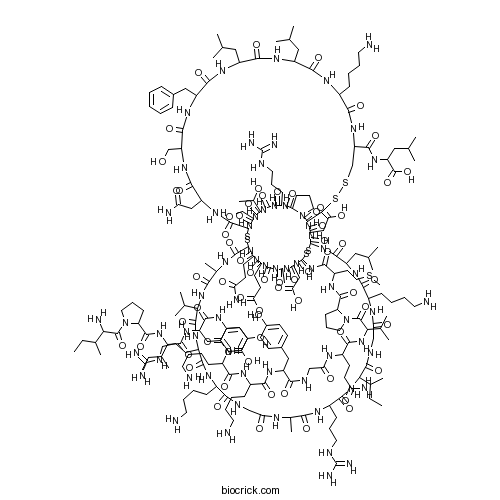
-
BCC7718
Org 12962 hydrochloride
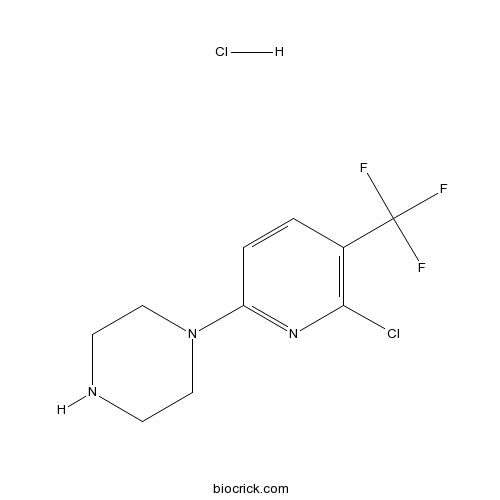
-
BCC6008
CART (62-76) (rat, human)
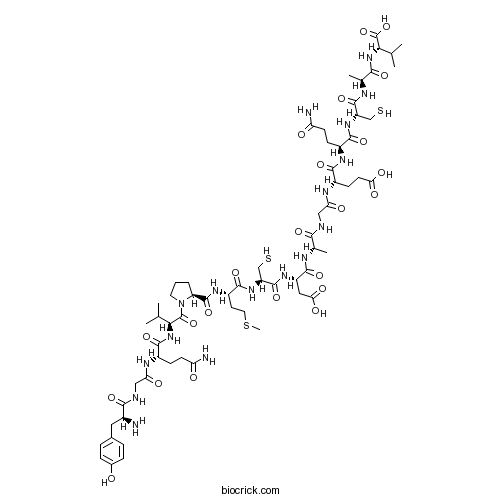
-
BCC5936
SB 265610
SB-265610 is a selective, competitive, nonpeptide and allosteric CXCR2 antagonist. SB-265610 blocks rat cytokine-induced neutrophil chemoattractant-1 (CINC-1)-induced calcium mobilization and neutrophil chemotaxis with IC50s of 3.7 nM and 70 nM, respectively.
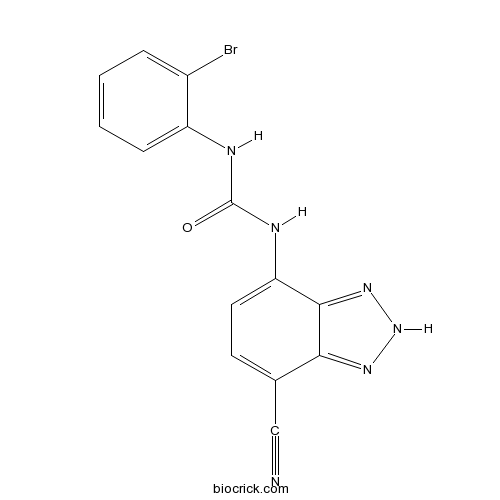
-
BCC6650
m-Chlorophenylbiguanide hydrochloride
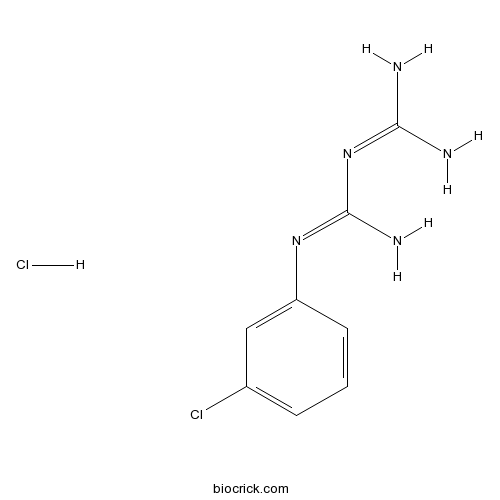
-
BCC5820
HS 024
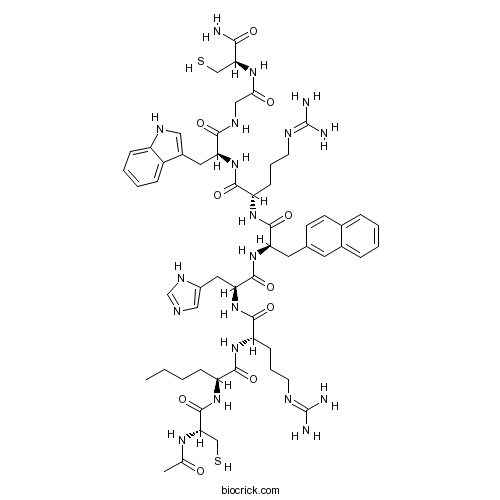
-
BCC5732
Nocistatin (human)
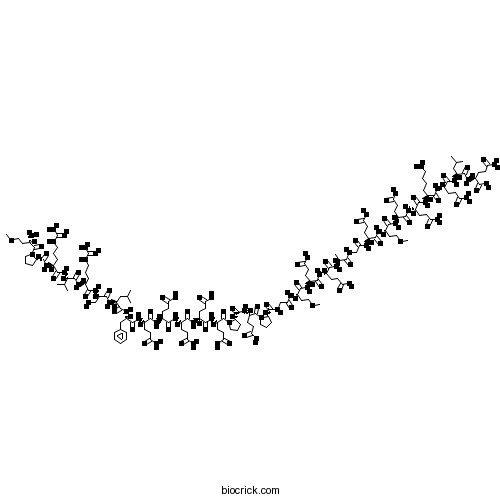
-
BCC6291
Org 37684
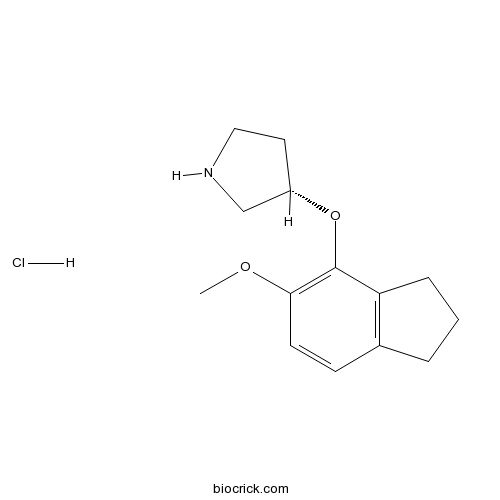
-
BCC5701
[Phe1Ψ(CH2-NH)Gly2]Nociceptin(1-13)NH2
![[Phe1Ψ(CH2-NH)Gly2]Nociceptin(1-13)NH2](/media/images/struct/BCC5701.png)
-
BCC6007
CART (55-102) (human)
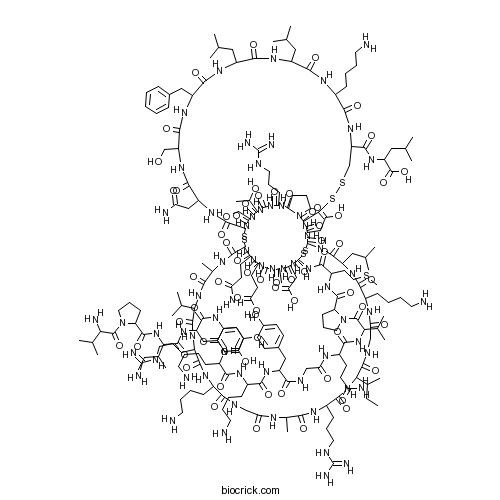
-
BCC6858
WB 4101 hydrochloride
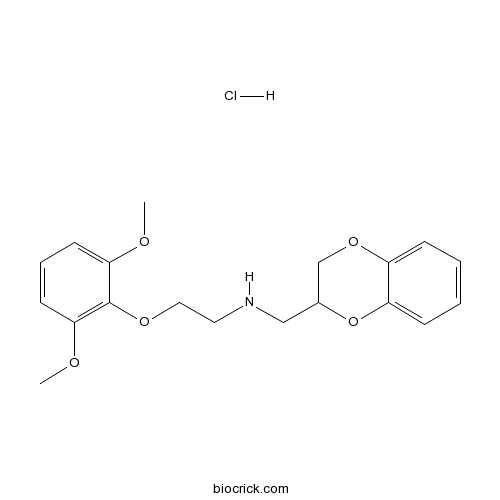
-
BCC5959
Apelin-17 (human, bovine)
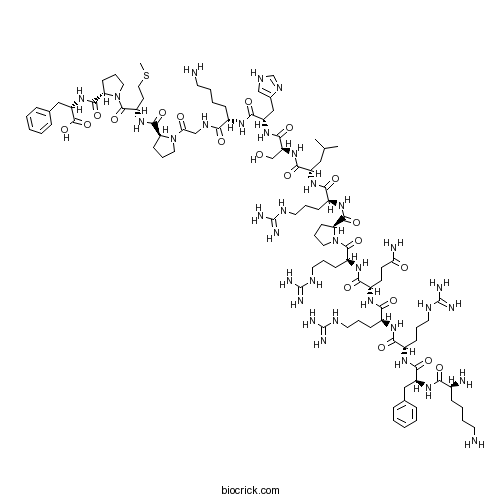
-
BCC7358
[Pyr1]-Apelin-13
[Pyr1]-Apelin-13 is a highly potent, selective endogenous apelin receptor (APJ) agonist.
![[Pyr1]-Apelin-13](/media/images/struct/BCC7358.png)
-
BCC7916
SB 268262
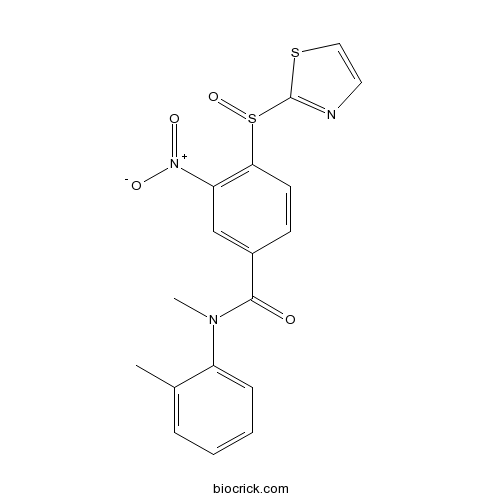
-
BCC7423
(±)-J 113397
Potent and selective NOP antagonist
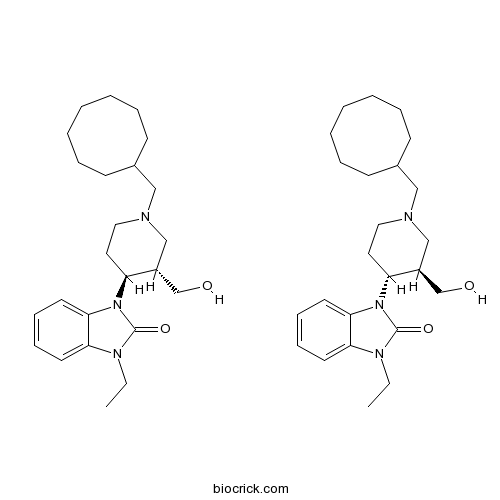
-
BCC7220
L-803,087 trifluoroacetate
L-803087 is a potent and selective somatostatin sst4 receptor agonist with a Ki of 0.7 nM, which is > 280-fold higher than other somatostatin receptors. L-803087 facilitates AMPA-mediated hippocampal synaptic responses in vitro and increases kainate-induced seizures in mice.
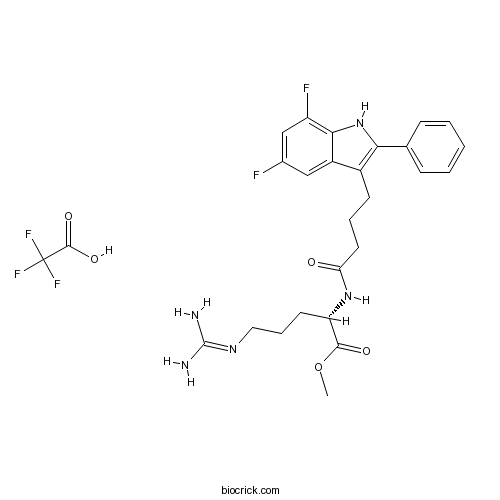
-
BCC7221
L-817,818
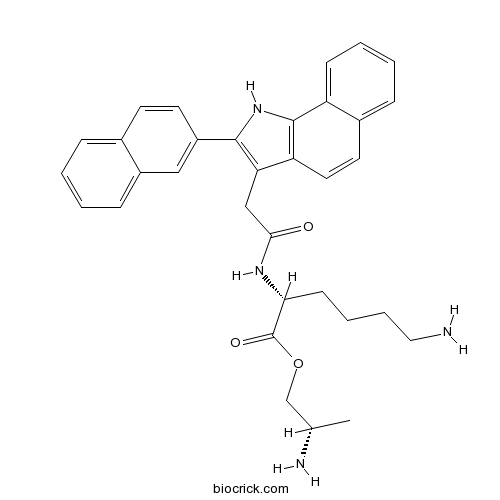
-
BCC6029
BX 471
BX471 (ZK-811752) is an orally active, potent and selective non-peptide CCR1 antagonist with a Ki of 1 nM, and exhibits 250-fold selectivity for CCR1 over CCR2, CCR5 and CXCR4.
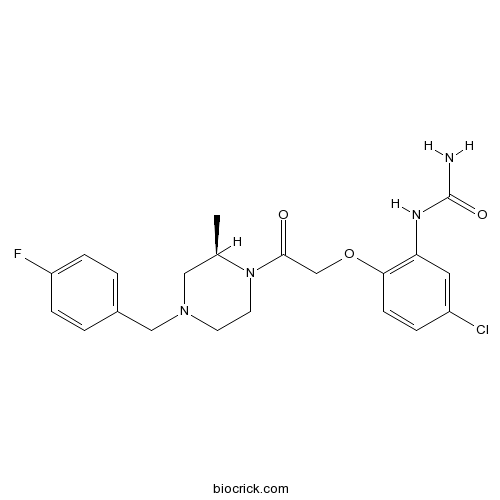
-
BCC1777
MPEP Hydrochloride
MPEP hydrochloride is a potent and highly selective non-competitive antagonist at the mGlu5 receptor subtype with IC50 of 36 nM.
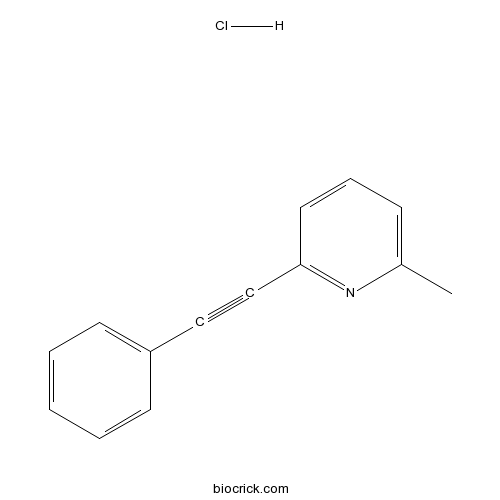
-
BCC6973
DH 97
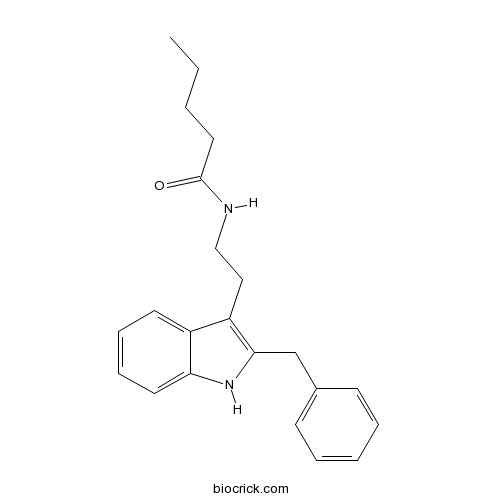
-
BCC5868
Antisauvagine-30

-
BCC7480
Antalarmin hydrochloride
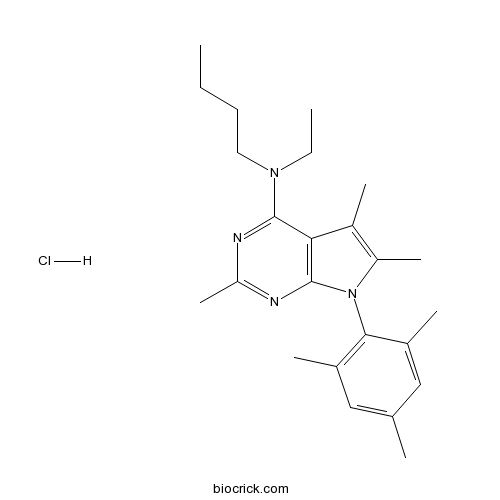
-
BCC5891
GLP-2 (human)
GLP-2(1-33) (human) is an enteroendocrine hormone which can bind to the GLP-2 receptor and stimulate the growth of intestinal epithelium.

-
BCC3814
Mirabegron (YM178)
Mirabegron is a selective β3-adrenoceptor agonist with EC50 of 22.4 nM.
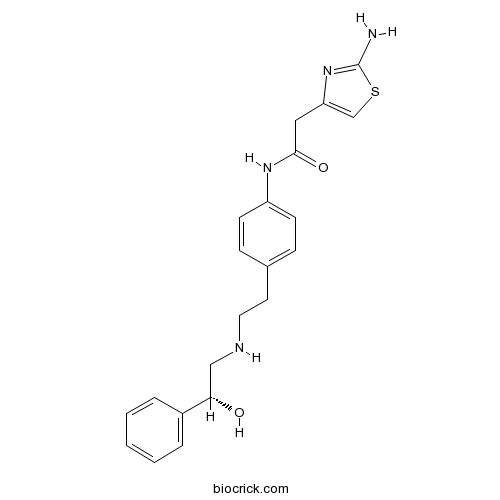
-
BCC1483
Cinacalcet
Cinacalcet (AMG 073) is an orally active, allosteric agonist of Ca receptor (CaR), used for cardiovascular disease treatment.
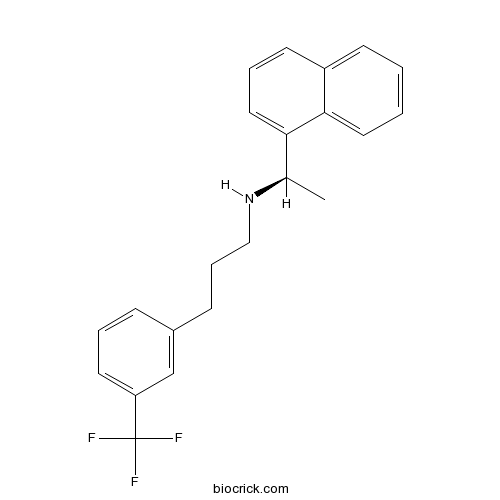
-
BCC5992
R 892
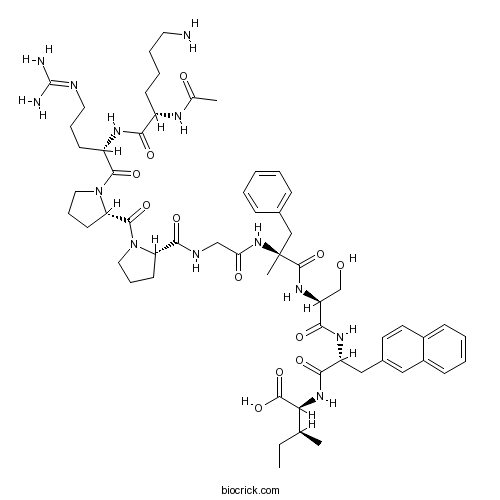
-
BCC7011
Abn-CBD
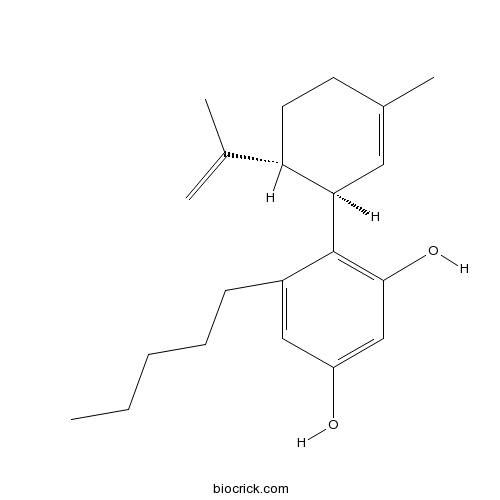
-
BCC5911
Apelin-36 (rat, mouse)
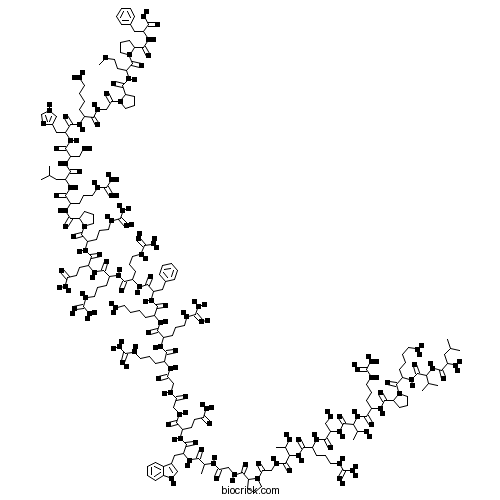
-
BCC4320
Terbutaline Sulfate
Terbutaline sulfate is a β2-adrenergic receptor agonist; a fast-acting bronchodilator and a tocolytic to delay premature labor.
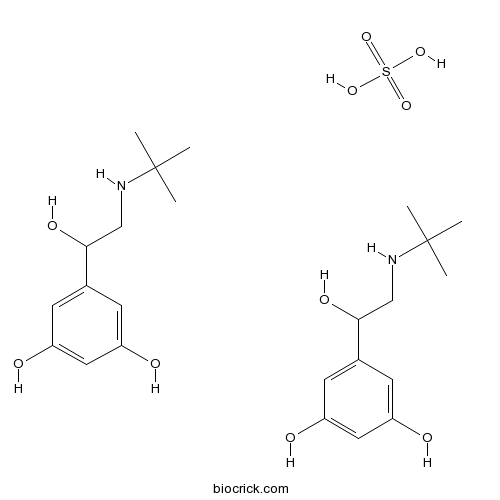
-
BCC4341
Xylazine HCl
Xylazine hydrochloride (BAY 1470 hydrochloride) is a strong α2-adrenergic agonist whose effects are mediated via stimulation of central α2-receptors. Xylazine hydrochloride is used as a sedative, analgesic and muscle relaxant in veterinary medicine.
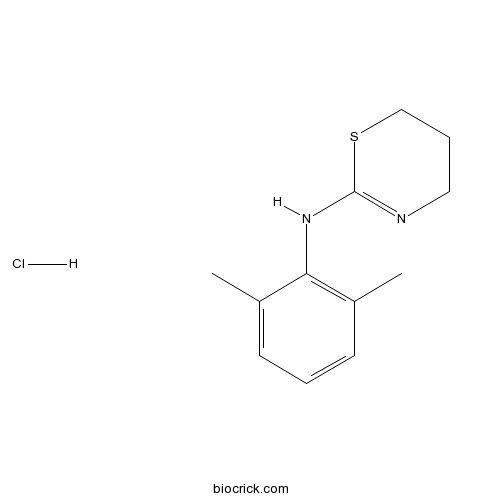
-
BCC4333
Oxymetazoline HCl
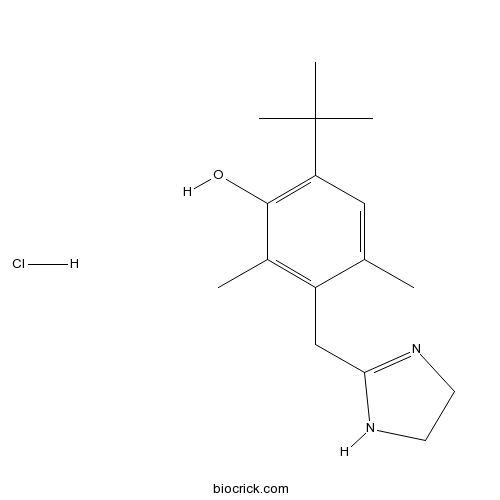
-
BCC4337
Ritodrine HCl
Ritodrine hydrochloride (DU21220 hydrochloride) is a β-2 adrenergic receptor agonist.
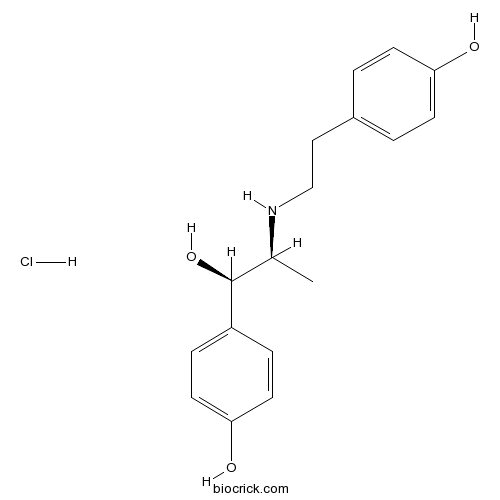
-
BCC4327
Guanabenz Acetate
Guanabenz (Acetate) (BR-750) is an alpha-2 selective adrenergic agonist used as an antihypertensive agent.
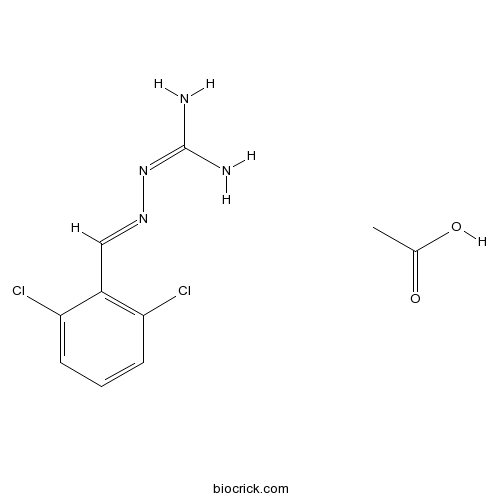
-
BCC7289
2-Palmitoylglycerol
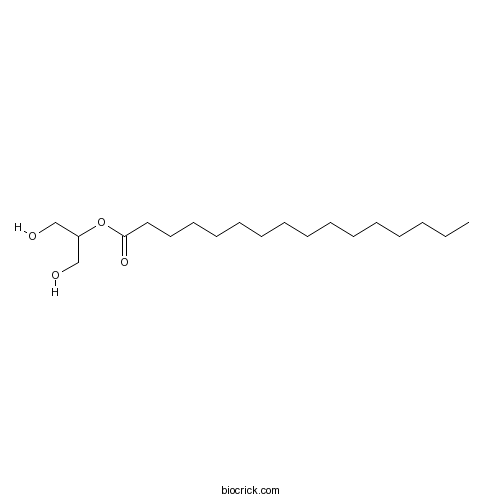
-
BCC6094
MEN 11270

-
BCC5781
[Arg14,Lys15]Nociceptin
![[Arg14,Lys15]Nociceptin](/media/images/struct/BCC5781.png)
-
BCC5629
Methylprednisolone Sodium Succinate
6α-Methylprednisolone 21-hemisuccinate sodium salt is a glucocorticoid of slightly longer half-life than that of Prednisolone.
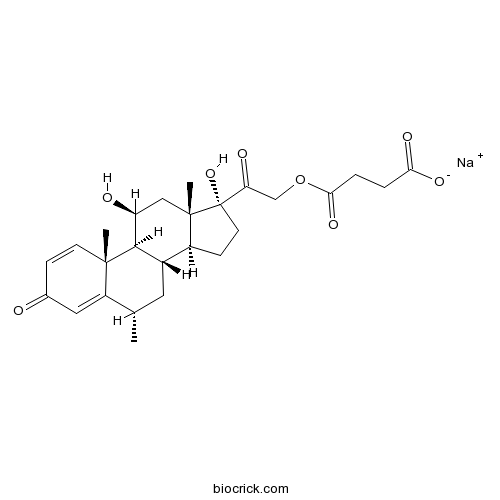
-
BCC5897
Tabimorelin hemifumarate
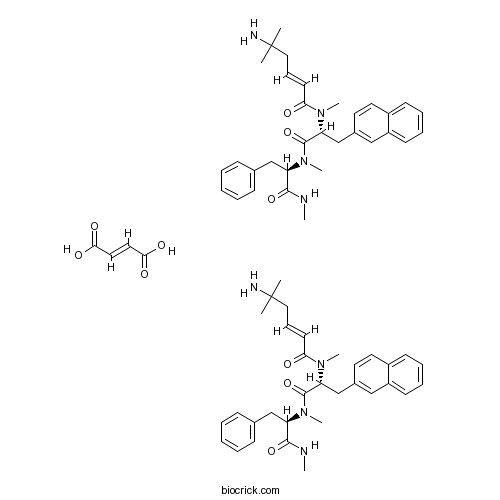
-
BCC1312
5-Iodotubercidin
5-Iodotubercidin (NSC 113939), an ATP mimetic, is a potent adenosine kinase inhibitor with an IC50 of 26 nM. 5-Iodotubercidin (NSC 113939) initiates glycogen synthesis in isolated hepatocytes by causing inactivation of phosphorylase and activation of glycogen synthase. 5-Iodotubercidin (NSC 113939) also inhibits CK1, insulin receptor tyrosine kinase, phosphorylase kinase, PKA, CK2, PKC and Haspin.
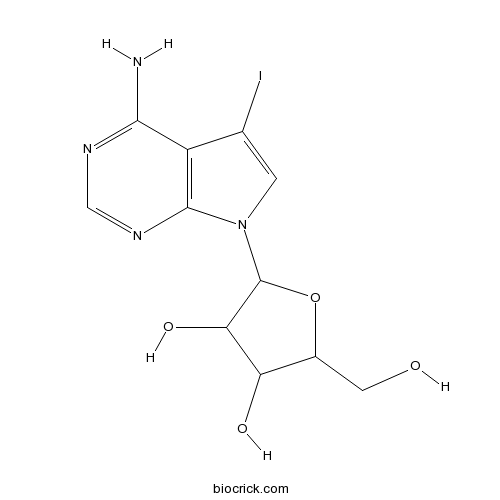
-
BCC7654
L-798,106
L-798106 is potent and highly selective prostanoid EP3 receptor antagonist (Ki=0.3 nM), it also has micromolar activities at the EP4, EP1 and EP2 receptors with Ki values of 916 nM, >5000 nM and >5000 nM at EP4, EP1 and EP2, respectively.
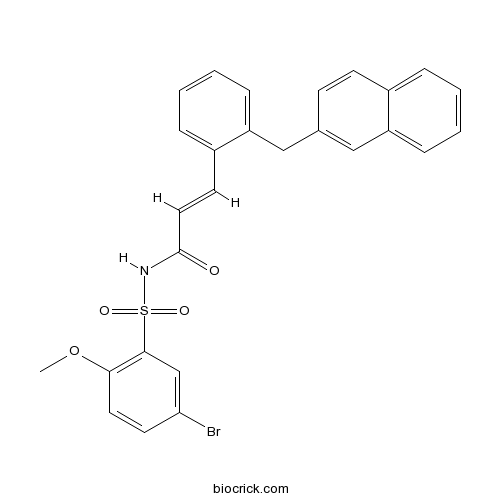
-
BCC7475
L-748,337
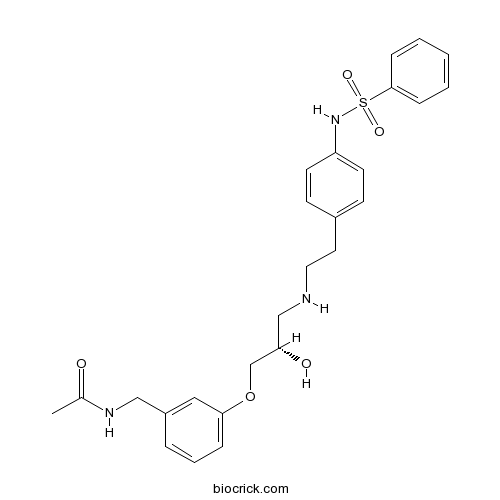
-
BCC6279
FSLLRY-NH2
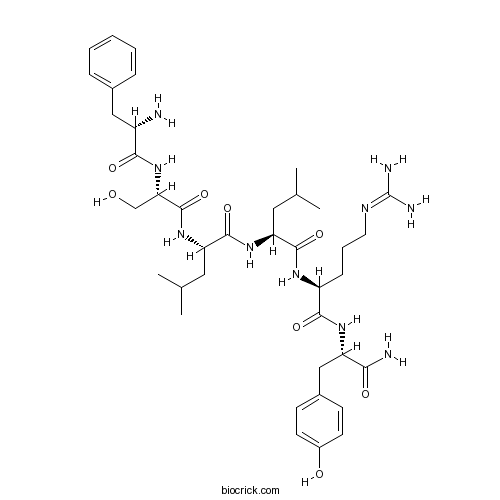
-
BCC6086
RWJ 52353
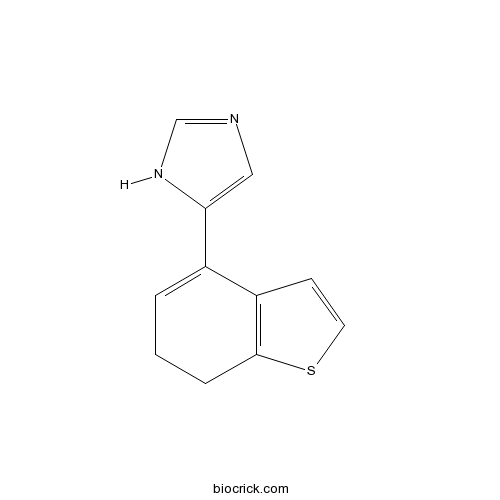
-
BCC7991
TC-G 1000
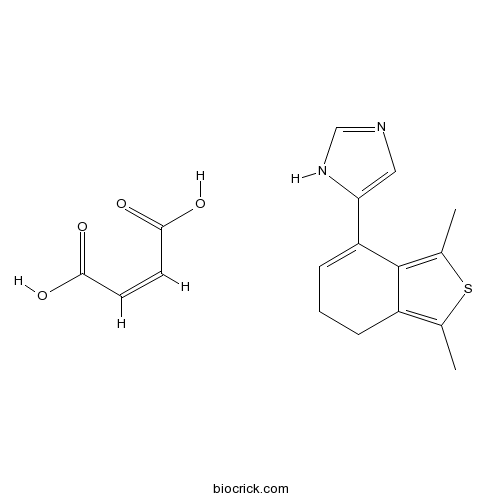
-
BCC7158
BIIE 0246
BIIE-0246 is a potent and highly selective non-peptide neuropeptide Y (NPY) Y2 receptor antagonist, with an IC50 of 15 nM.
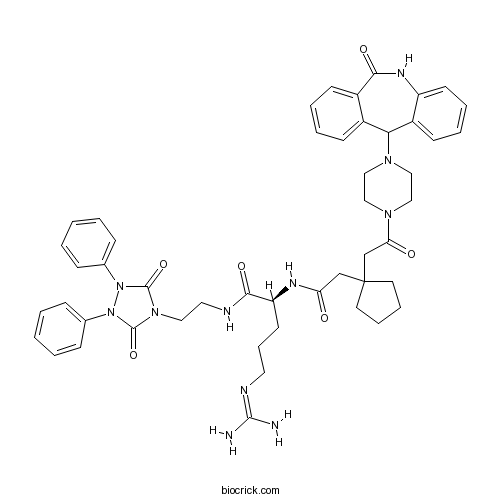
-
BCC5366
AL 8810
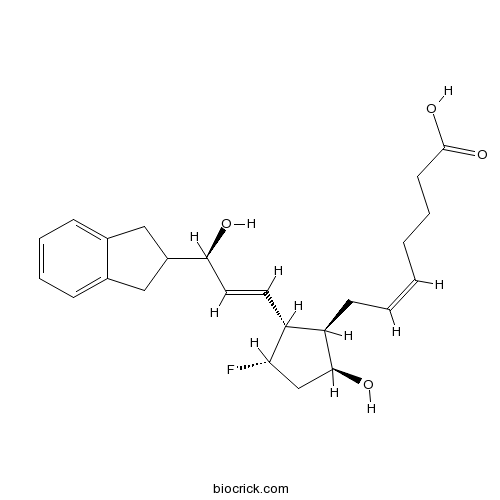
-
BCC5552
Fimasartan
Fimasartan(BR-A-657) is a non-peptide angiotensin II receptor antagonist used for the treatment of hypertension and heart failure.
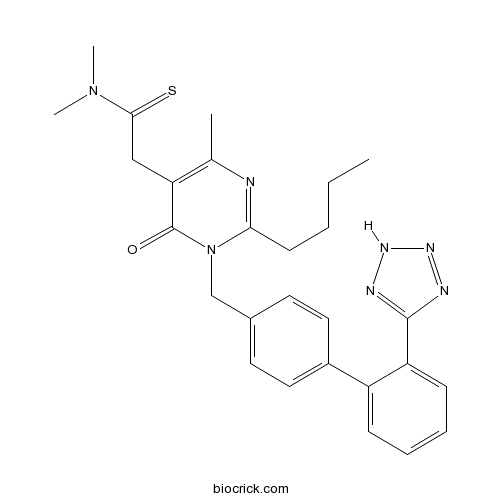
-
BCC6657
Dihydroergocristine mesylate
Dihydroergocristine mesylate (DHEC mesylate) is a inhibitor of γ-secretase (GSI), reduces the production of the Alzheimer's disease amyloid-β peptides, binds directly to γ-secretase and Nicastrin with equilibrium dissociation constants (Kd) of 25.7 nM and 9.8 μM, respectively.
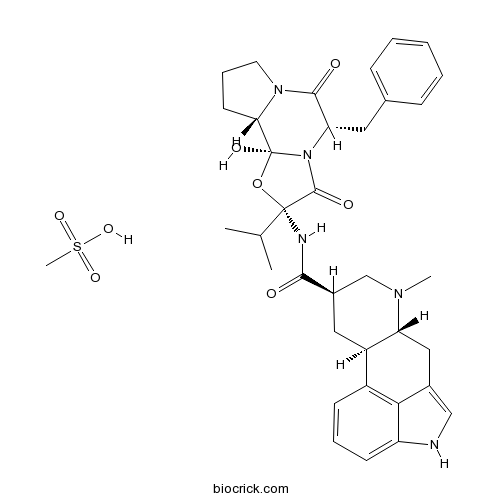
-
BCC6056
SB 328437
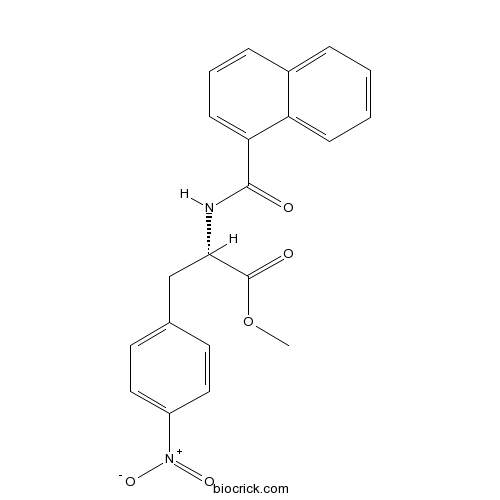
-
BCC6813
Agmatine sulfate
Agmatine sulfate exerts modulatory action at multiple molecular targets, such as neurotransmitter systems, ion channels and nitric oxide synthesis. It is an endogenous agonist at imidazoline receptor and a NO synthase inhibitor.
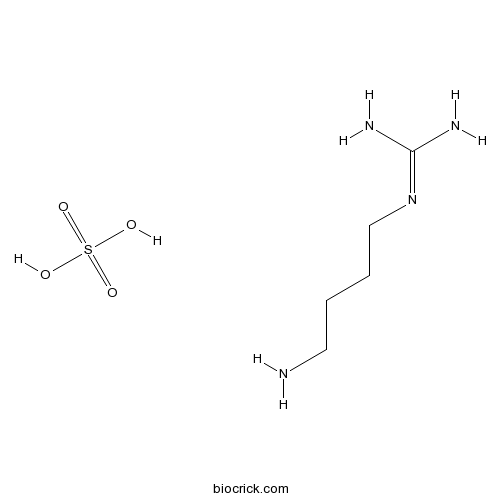
-
BCC4289
SB-334867 hydrochloride
SB-334867 (SB 334867A) is an excellent,selective and blood–brain barrier permeable orexin-1 (OX1) receptor antagonist, shows selectivity over OX2 (pKb=7.4), 100-fold over 5-HT2B, 5-HT2C with pKi values of 5.4 and 5.3, respectively. SB-334867 reduces ethanol consumption and inhibits the acquisition of morphine-induced sensitization to locomotor activity in vivo.
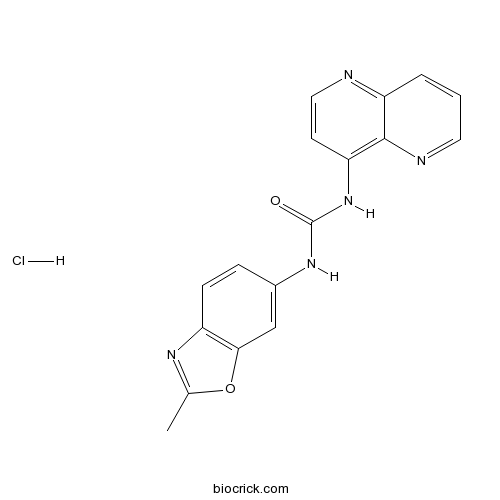
-
BCC1362
Anamorelin
Anamorelin is a novel ghrelin receptor agonist with EC50 value of 0.74 nM in the FLIPR assay.
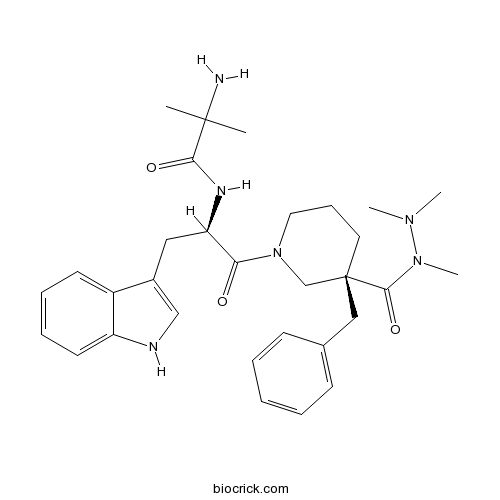
-
BCC7177
NNC 63-0532
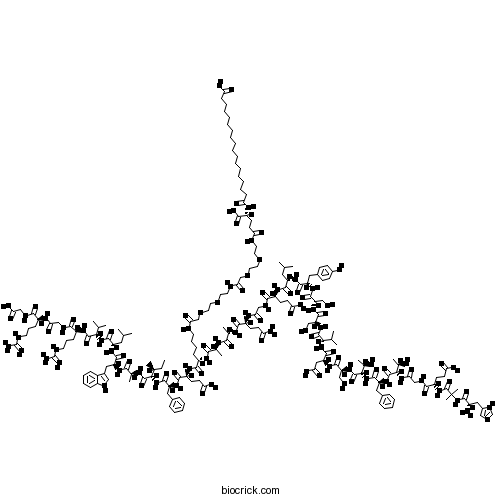
-
BCC5796
Urotensin II (human)
Urotensin II (114-124), human, an 11-amino acid residue peptide, is a potent vasoconstrictor and agonist for the orphan receptor GPR14.
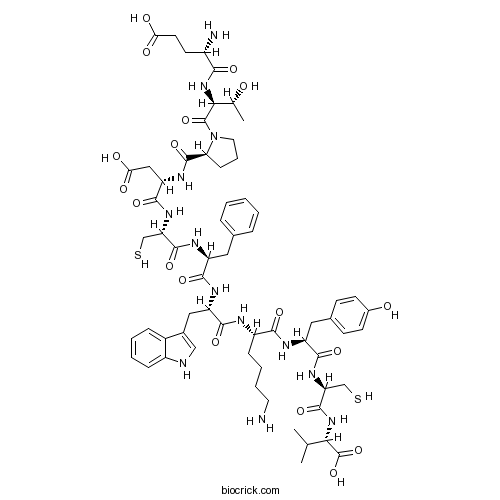
-
BCC7656
SLV 320
Derenofylline (SLV 320) is a potent, selective and orally active adenosine A1 receptor antagonist, with Ki values of 1 nM, 200 nM and 398 nM for human A1, A3 and A2A receptors respectively. Derenofylline suppresses cardiac fibrosis and attenuates albuminuria without affecting blood pressure in rats.
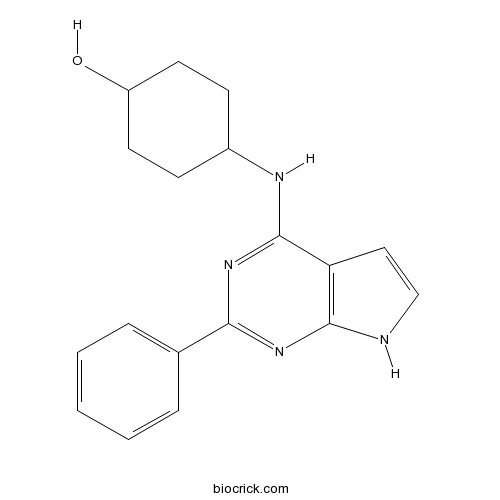
-
BCC5910
Apelin-36 (human)

-
BCC7433
RWJ 56110
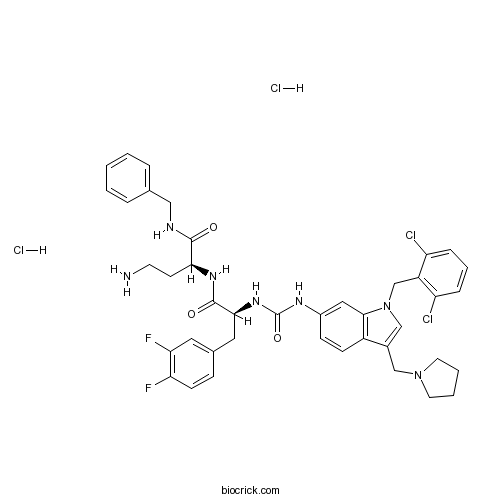
-
BCC6106
MRE 3008F20
MRE3008F20 is a highly potent and selective antagonist of adenosine A3 receptor (AA3R), inhibits agonist-induced cAMP elevation in resting T lymphocytes with an IC50 of 5 nM.
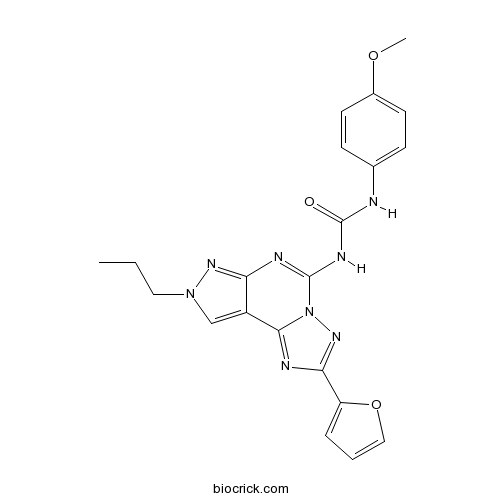
-
BCC7924
Talsupram hydrochloride
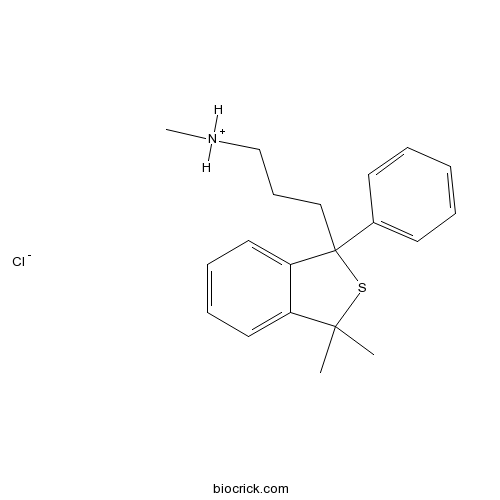
-
BCC7312
SEW 2871
SEW2871 is a highly selective, orally active S1P1 agonist with an EC50 of 13.8 nM. SEW2871 activates ERK, Akt, and Rac signaling pathways and induces S1P1 internalization and recycling. SEW2871 reduces lymphocyte numbers in blood and has therapeutic implications in contexts of diabetes, Alzheimer’s disease, liver fibrosis, and inflammatory responses.
